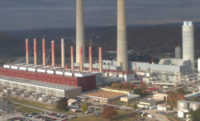The U.S. Environmental Protection Agency has issued a final rule prohibiting ongoing uses of chrysotile asbestos, the only known form of asbestos currently imported, processed or distributed for use in the U.S. Utilized in water and wastewater treatment systems, piping and machinery sheet gaskets and other applications, chrysotile asbestos has long been linked to several types of cancer and mesothelioma, causing more than 40,000 U.S. deaths annually, according to the agency.
In addition to setting compliance deadlines for manufacturers to transition away from each use of chrysotile asbestos, EPA also is requiring strict workplace safety measures to protect workers from asbestos exposure during any phaseout periods longer than two years. Asbestos disposal work must be carried out in conformance with industry standards, Occupational Safety and Health Administration requirements, and the Asbestos National Emission Standards for Hazardous Air Pollutants. Recordkeeping is also required.
Although overall use of new asbestos-containing materials has declined over the past decades, EPA says raw chrysotile asbestos was imported into the U.S. as recently as 2022 for use by the chlor-alkali industry, which utilizes asbestos diaphragms to produce the water and wastewater disinfectants sodium hydroxide and chlorine. Under EPA’s new rule, the eight remaining U.S. chlor-alkali facilities that use asbestos must transition to either non-asbestos diaphragms or non-asbestos membrane technology as soon as practicable.
The agency says it expects five of the facilities to convert to non-asbestos diaphragms within the next five years, a period it believes will prevent disruptions to the supply of chlorine for water purification applications.
Recognizing that converting existing chlor-alkali plants to non-asbestos technology requires extensive construction, permitting and specialized expertise, as well as a limited availability of necessary parts and equipment, EPA has established a staggered transition schedule of five to 12 years for manufacturers with multiple facilities, along with a requirement to certify their continued progress with the agency.
The EPA rule also bans most asbestos-containing sheet gaskets by March 2026, with a five-year phase-out of sheet gaskets used to produce titanium dioxide and for the processing of nuclear material. The U.S. Department of Energy’s 310 square-mile Savannah River Site in South Carolina may continue to use asbestos-containing sheet gaskets through the end of calendar year 2037 to keep the massive disposal project safely on schedule, and protect workers from exposure to radioactive materials.
Other uses of asbestos—oilfield brake blocks, aftermarket automotive brakes and linings and other vehicle friction products and gaskets—must be discontinued by mid-September 2024.
Sean McGarvey, president of North America’s Building Trades Unions (NABTU), praised the action, noting construction union members’ longstanding vulnerability to diseases caused by asbestos.
“Construction workers who build, maintain, and demolish buildings in those industries will be saved from potentially life-ending exposures,” McGarvey said in a statement, adding that “workers with exposure throughout the supply chain” will benefit as well.
The new asbestos rule is the first to be finalized under the 2016 amendments to the Toxic Substances Control Act (TSCA), which strengthened EPA’s regulatory authority after a ruling by the Fifth Circuit of the U.S. Court of Appeals that largely gutted the agency’s original 1989 ban on the material. Under the TSCA amendments, EPA is required to comprehensively prioritize and evaluate chemicals, and establish timely health protections against any unreasonable risks.
In a separate risk evaluation, EPA is evaluating other types of asbestos fibers in addition to legacy uses and associated disposal of chrysotile and asbestos-containing talc). The agency plans to release this draft risk evaluation soon, with publication of a final risk evaluation by Dec. 1, 2024.
EPA is also advancing proposals to address cancer and other long-recognized health risks from commercial and industrial chemicals such as methylene chloride, carbon tetrachloride, perchloroethylene and trichloroethylene, all of which are used in commercial and industrial settings. Additionally, the agency has proposed a rule to strengthen its process for conducting risk evaluations on toxic chemicals, including carcinogens.





Post a comment to this article
Report Abusive Comment